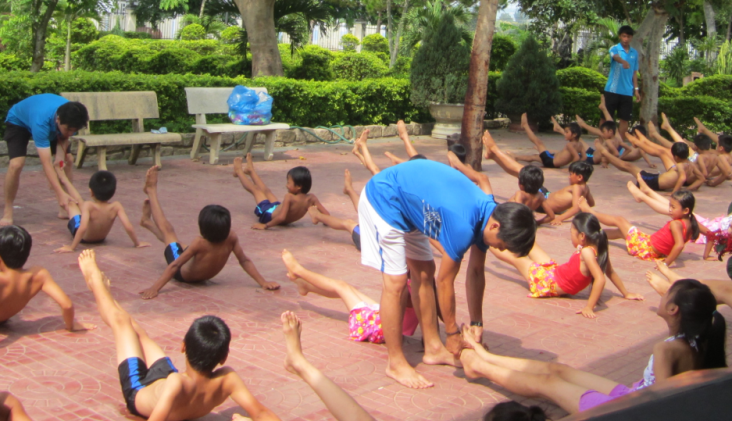
Aug. 2014—For Y Nguyet, during the rainy season in Vietnam, just going to and from school was a fearful experience. Without knowing how to swim, she had to pass through treacherous, fast-flowing streams, which have been known to sweep people away.
Nguyet is from Kon Tum province, where the complicated system of lakes and ponds, together with the four- to five-month rainy season, poses major flash flooding and drowning risks, especially among children, many of whom do not know how to swim. In 2012 alone, among the 15 child deaths caused by accidents, 12 were due to drowning.
With support from USAID’s Office of U.S. Foreign Disaster Assistance, swimming lessons have been provided for school children under the Building Child-Centered Disaster Resilient Communities in Kon Tum Province project, implemented by Plan International.
“I was very lucky to be chosen for the swimming class. I love it a lot,” said Nguyet, an 11-year-old member of the Bhana ethnic minority group, who has just finished elementary school. She was one of almost 90 students from local schools who joined the swimming classes organized in July and August 2013 with support from the USAID-funded project.
“Within a week, my friends and I learned how to swim. I could swim well after just three days. I will teach my cousin to swim, so she will not die of drowning. My teacher told me that I don’t have to be scared of drowning anymore,” said Nguyet. “In the swimming class, the teacher also told us not to go through streams when water levels are high. He taught us not to jump into the water to save drowning people. He said we should try to use a long tree branch to pull them up, or quickly call adults for help,” she added.
Of the 90 children who attended the swimming classes, approximately 35 percent can now swim well and feel totally confident in the water. Of the remaining 65 percent, all children understand the risks of drowning and basic theory, although swimming abilities vary.
Looking at Nguyet’s loving eyes, her mother, Y Le, said: “I’m very happy when my daughter can swim. Before, when the rainy season arrived, my heart ached while waiting for Nguyet to come back from school. I was afraid that she could be swept away any time like some other children that I have ever heard. Now I feel relieved.”
In addition to swimming classes for children, the three-year project, which runs from June 2012 to April 2015, works with at-risk communities, focusing on women, children and ethnic minorities, to strengthen their awareness and ability to mitigate and respond to disasters. Through trainings and local discussions, around 10,000 people have been equipped with disaster preparedness skills.







Comment
Make a general inquiry or suggest an improvement.